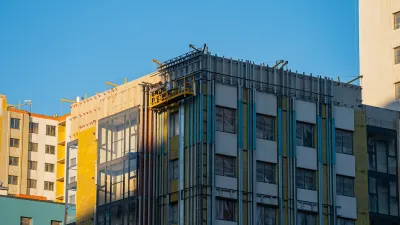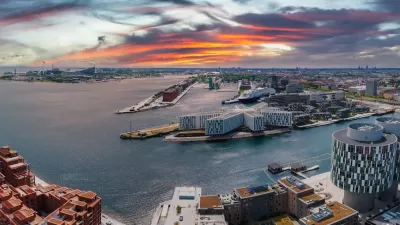Felicity Barringer looks at an innovative program being tested in Seattle to incentivize commercial property owners to undertake major energy efficiency retrofits. A partnership between skeptical building owners, investors, and utilities is key.
As Barringer explains, 'deep retrofits' are a hard sell to the owners of older, smaller commercial buildings, "which, according to a new report [PDF], account for 47 percent of all commercial real estate outside the world of malls."
"In a new twist, some investors, a technology company, a municipal utility and an environmentally oriented foundation have joined forces to show that major energy-efficiency improvements in commercial buildings may provide alluring new revenue to all involved."
"The basic plan intends to ensure that utilities lose none of the revenue that supports their fixed costs — wires and other infrastructure — while allowing them access to a new power source," she explains. "The energy not used by Bullitt or any other building is purchased by the utility in a 30-year contract, just as if they were purchasing hydropower or coal-fired electricity."
"The utility was not easy to convince," she adds. "As 'Disruptive Challenges,' a recent report [PDF] from the Edison Electric Institute shows, the industry is getting increasingly nervous about its long-term ability to finance its infrastructure costs in a new world of efficiency and renewable energy."
"As Jorge Carrasco, the superintendent of Seattle City Light, explained it, any utility executive must think 'about what does this new approach do from a financial standpoint to an entity that makes its living by selling energy?'"
FULL STORY: Making Energy Efficiency Attractive for Owners of Older Seattle Buildings

Alabama: Trump Terminates Settlements for Black Communities Harmed By Raw Sewage
Trump deemed the landmark civil rights agreement “illegal DEI and environmental justice policy.”

Planetizen Federal Action Tracker
A weekly monitor of how Trump’s orders and actions are impacting planners and planning in America.

How Atlanta Built 7,000 Housing Units in 3 Years
The city’s comprehensive, neighborhood-focused housing strategy focuses on identifying properties and land that can be repurposed for housing and encouraging development in underserved neighborhoods.

In Both Crashes and Crime, Public Transportation is Far Safer than Driving
Contrary to popular assumptions, public transportation has far lower crash and crime rates than automobile travel. For safer communities, improve and encourage transit travel.

Report: Zoning Reforms Should Complement Nashville’s Ambitious Transit Plan
Without reform, restrictive zoning codes will limit the impact of the city’s planned transit expansion and could exclude some of the residents who depend on transit the most.

Judge Orders Release of Frozen IRA, IIJA Funding
The decision is a victory for environmental groups who charged that freezing funds for critical infrastructure and disaster response programs caused “real and irreparable harm” to communities.
Urban Design for Planners 1: Software Tools
This six-course series explores essential urban design concepts using open source software and equips planners with the tools they need to participate fully in the urban design process.
Planning for Universal Design
Learn the tools for implementing Universal Design in planning regulations.
Caltrans
Smith Gee Studio
Institute for Housing and Urban Development Studies (IHS)
City of Grandview
Harvard GSD Executive Education
Toledo-Lucas County Plan Commissions
Salt Lake City
NYU Wagner Graduate School of Public Service





























